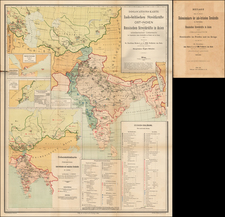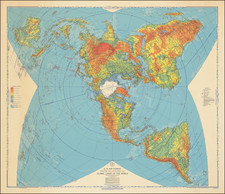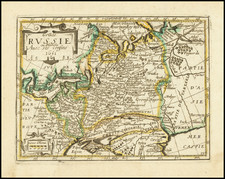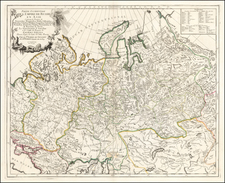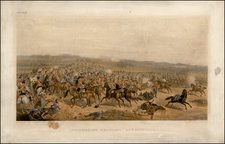News Chronicle Map of Russia, published in September 1950 in conjunction with the series "The Mystery of the Kremlin" by Lieut.-General Bedell-Smith, U.S. Ambassador to Moscow from 1946 to 1949, stands as a poignant reflection of post-World War II geopolitical tensions. This map, explicitly intertwined with Bedell-Smith's tenure as Chief of America's Intelligence Service, showcases Russia's geographical spread, its strategic locations, as well as its comparison in various metrics to the U.S.A. and the U.K. The overt statement about the map being "deliberately distorted" to display maximum information underscores the exigency of representing Cold War concerns.
The end of the Second World War heralded the beginning of the Cold War, a period dominated by escalating tensions between the West, particularly the United States and the United Kingdom, and the Eastern Bloc, led by the Soviet Union. During these years, international interest in Russia was at its zenith, as global powers sought to understand the strategic positioning, strengths, and vulnerabilities of this emergent superpower. The News Chronicle's decision to publish this map, along with Bedell-Smith's series, indicates the media's role in shaping perceptions and offering insights into the mysterious workings of the Kremlin.
The map emphasizes significant facets of Cold War interests, highlighting not just geographical frontiers but also areas of strategic importance like submarine bases, army headquarters, and naval bases. The representation of the Trans-Siberian Railway underscores Russia's vast reach across its territory, while the inset map delves into the spread of Communist influence in Southeast Asia, showcasing a broader global concern of Western powers. Furthermore, the quantitative comparisons in metrics like oil, electric power, and production of materials such as chemicals and light metals between the USSR, USA, and the UK serve as an economic and industrial juxtaposition of the involved powers.
Crucially, the mention that "Asiatic Russia is at least three times the area of European Russia" with the map's deliberate distortion offers readers a palpable sense of the enormity of Russia's territorial expanse. This distortion was not merely a cartographic choice; it was a strategic decision to emphasize the vastness and importance of Russia's reach in both Europe and Asia.
Finally, the map serves as both a historical artifact and a visual representation of an era marked by suspicion, strategic posturing, and the search for understanding in a bifurcated world. The involvement of Lieut.-General Bedell-Smith, given his pivotal roles both as an ambassador to Moscow and later as a chief intelligence figure, underscores the map's importance in articulating American perceptions and concerns during a critical juncture in global history.









